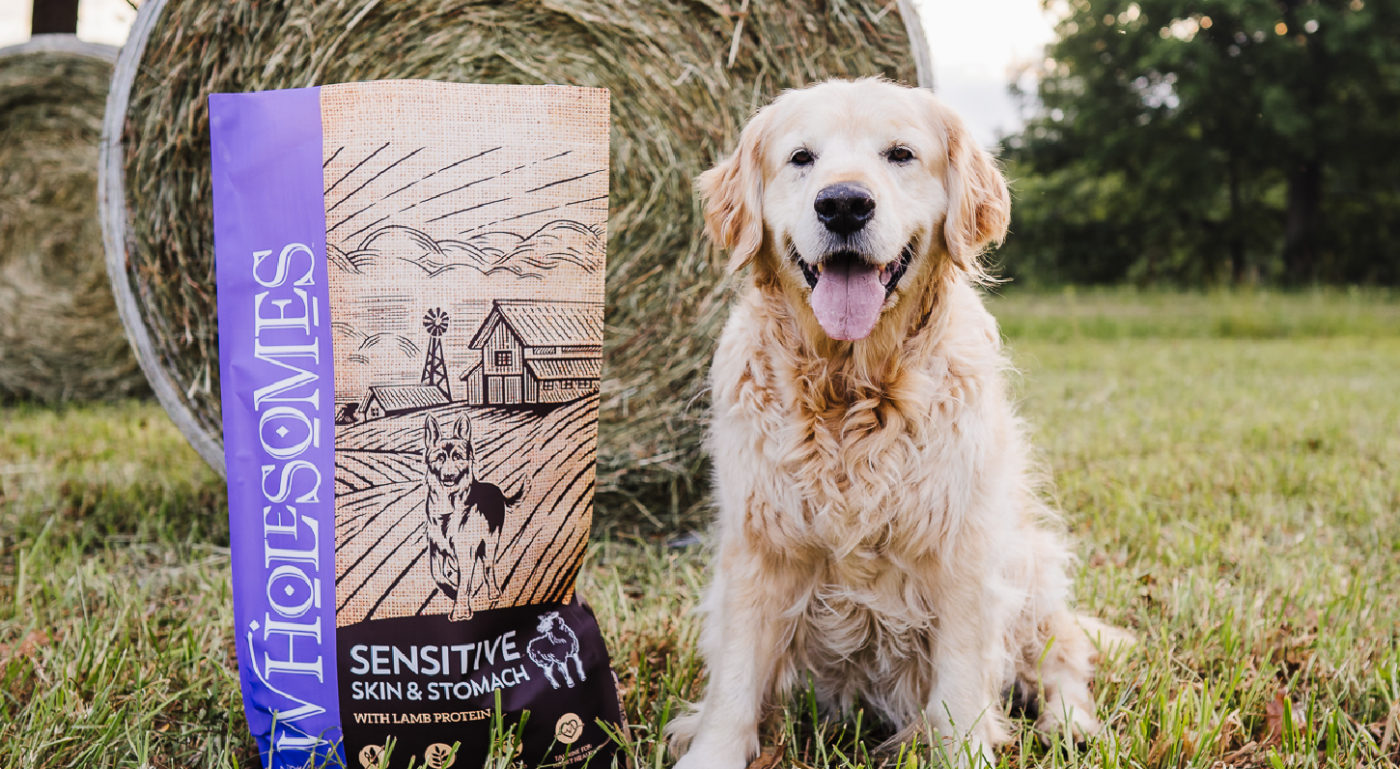How To Help Your Dog’s Itchy Skin

Why Is Your Dog’s Skin Itchy?
Finding out why your dog’s skin is itchy is the first step in providing them relief. Dry skin can be one reason. This can be influenced by environmental factors or even your dog’s food. Try a pet food that targets sensitive skin and contains essential fatty acids such as Wholesomes Sensitive Skin & Stomach recipes. Choose from great proteins like lamb or salmon.
Another reason why your dog’s skin could be itchy is because of allergies. This could mean environmental allergies that are sometimes unavoidable. Common environmental allergens include pollen, molds, grass, trees, and dust mites. Atopic dermatitis is a disease that can occur when your pup is exposed to these types of allergens. Medications such as steroids or anti-inflammatories can be issued by your vet to help treat the scratchy symptoms of atopic dermatitis.
Food allergies are also a reason why your dog’s skin could be itchy. Only about 10% of allergies in dogs are food related though.
The main difference between environmental allergies and food allergies is pretty evident. Environmental allergies may come and go with the seasons while food allergies can cause other issues not related to skin such as gas, diarrhea, and/or vomiting. Set up an appointment with your vet to determine which type of allergy your dog may have or if they are only suffering from dry skin.
Dry Skin Relief Solutions
Once you’ve determined that your dog is suffering from dry skin, try some of these home remedies and dog grooming tips to comfort their dry skin.
- Avoid using shampoo at bathtime.
- Use the cool setting when blow drying your dog.
- Provide plenty of fresh drinking water.
- Try extra oils or supplements on top of your dog’s kibble.
Environmental & Food Allergy Relief Solutions
Diagnostic Testing
There are two different types of tests that can be administered by your vet to pinpoint exactly why your dog’s scratching.
- Intradermal skin testing – this is performed by a veterinary dermatologist. The dog’s fur is shaved in one spot allowing for the vet to inject various pure allergens. From there they measure the allergic reaction response and determine what exact allergens your dog is allergic to.
- RAST or serologic testing – a small blood sample is drawn by the vet and submitted to a lab for analysis. This type of test may not be accurate as intradermal.
Diet Change
Food allergies can be a trial and error process. Changing your dog’s diet can help determine which ingredient they may be allergic to. Remember though, ease your dog into a new food that you are feeding. We suggest a seven day switch that is broken down below.
- Days 1 & 2 – 25% new food, 75% old food
- Days 1 & 2 – 25% new food, 75% old food
- Days 3 & 4 – 50% new food, 50% old food
- Days 5 & 6 – 75% new food, 25% old food
- Day 7 – 100% new food
This allows your pup to grow familiar with their new food and it also helps alleviate issues that come from switching dog food. When changing dog food too quickly, symptoms like upset stomach can occur so switching dog food slowly over a period of a week (or two if your dog is especially prone to stomach issues) is always best.
The first thing to consider changing is the protein your dog is eating. A majority of the time dog’s are allergic to chicken or beef. Changing to a more unique protein food such as Wholesomes Lamb & Rice or Wholesomes Whitefish Meal & Rice can be a great starting point. Always consult your veterinarian before making any changes to your dog’s diet.
Vet-Administered Medications
Medications can be prescribed or administered by your vet if none of the above solutions will help. Antihistamines, steroids or other autoimmune solutions can be given to your dog. Just like humans, your dog may need to be on monthly allergy shots.
Your dog’s itchy skin can be uncomfortable for them, leading to unhappiness. Finding ways to help your dog’s itchy skin can be a long process, but worth it once a solution is found. Speaking to your veterinarian is the first step to providing relief. They can help determine the best method to helping your dog’s itchy skin.
